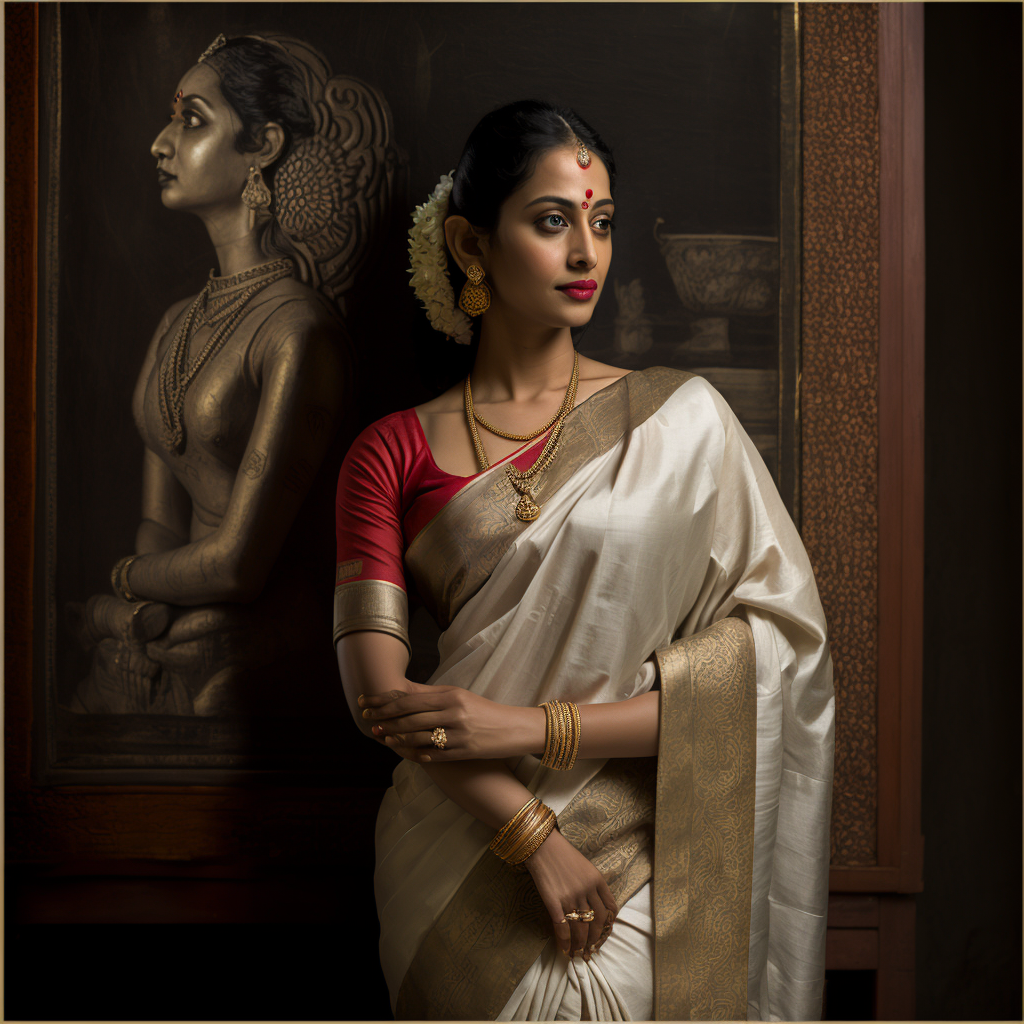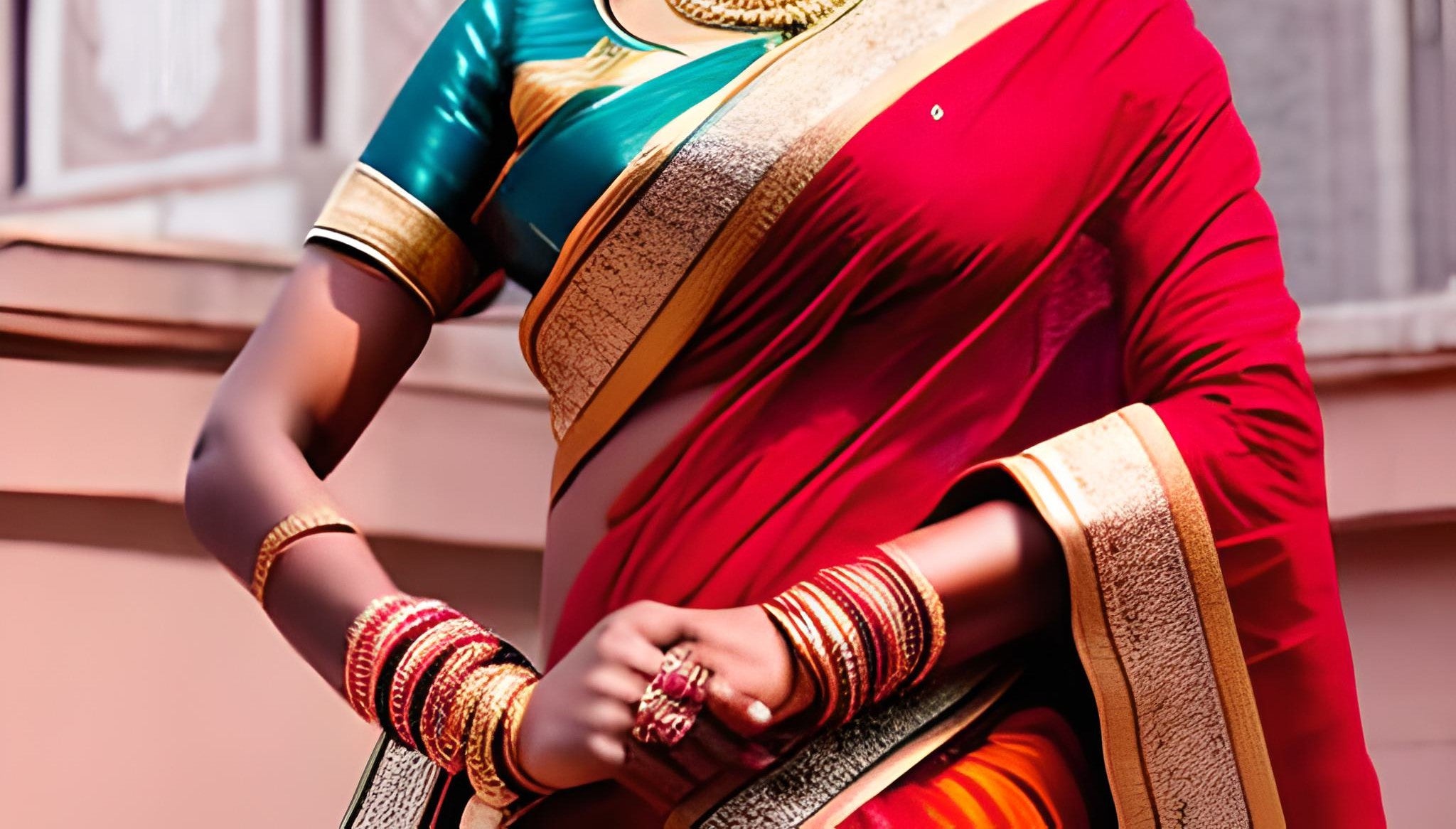
Authentic Chanderi Cotton Saree | The Usee Shop Blog
Everything You Need to Know About Chanderi Cotton Saree
Explore the alluring realm of Chanderi cotton sarees, where age-old weaving techniques meet cutting-edge design. In this in-depth tutorial, you'll learn all about this gorgeous clothing, from its significant cultural background to its beautiful weaving and elaborate motifs. Learn more about the history of India's textile industry and the significance of the Chanderi cotton saree by exploring its many uses and stunning aesthetic.
Join us on our quest to learn the history and significance of the Chanderi cotton saree, whether you are a saree expert or merely interested in learning more about this iconic garment.
What is Chanderi Cotton Fabric?
Domicile to the small town of Chanderi deeply tucked away in the heart of India, Chanderi sarees have derived their name from their home itself. Chanderi is a century-old weaving technique that produces three kinds of fabric –
- Chanderi silk cotton: A unique textile-producing technique in which the warp thread is made of un-degummed mulberry silk, whereas the weft thread comprises un-degummed cotton fibres.
- Pure silk: A homogeneous concoction of pure silk yarn used in the warp and weft.
- Chanderi Cotton: Eminent for their lightweight, glossy transparency and sheer texture, Chanderi cotton sarees are the epitome of interlacing tradition with a western tint. They are made of pure cotton fibres used in the warp and weft.
In this blog, we will revolve our epicentre around Chanderi cotton sarees.
13th century to Today: The Historical Ride of Cotton Chanderi Sarees
Chanderi sarees first came into being when a saint laid his ashram in Chanderi in the 13th century. This stimulated the Koshti weavers to migrate from Jhansi to chanderi. They reached their pinnacle during the Delhi Sultanate as the rulers such as Alauddin Khilji and Muhammad-bin Tuglaq actively patronized the chanderi-producing artisans. Their trade declined during Auragzeb's reign but was revived by the Sinshiyas.
Specializing in producing finely woven Chanderi sarees of cotton adorned with zari work and meticulously woven by hand, these sarees have, for time immemorial, fulfilled the refined tastes of royalty. Today, they form an irreplaceable part of India's traditional diversity and hold much significance in its heritage.
Cotton Chanderi sarees- A guide to the Hot Trends and Color Palette
We all like to feel like we belong, so we must be aware of modern fashion trends. Cotton chanderi sarees come in many hues, such as mehendi green, maroon, mango yellow, peacock green, lime green, chill red, and rani pink. These hues are paired with contrasting shades of pallus, for instance, peacock green+ ocean blue and mango yellow+ scarlet orange. They are permeated with earthen colours, antique saree borders such as ganga jamuna with a thin zari strip, and subtle prints.
Difference Between Chanderi Silk And Chanderi Cotton
Indecisiveness can be battled with factual information. Next time you must choose between chanderi silk sarees and chanderi cotton sarees, consider these points.
Durability
Silk has impeccable tensile strength as it is a naturally sturdy fibre. This gives silk chanderi sarees resistance against a great deal of pressure. Cotton is also a strong fibre, but its strength is susceptible to moisture. Nevertheless, cotton can sometimes last longer than silk, as silk requires ultra-conscientious care and special attention to ensure that it retains its durable properties.
Cost
High-end silk chanderi sarees are more expensive than high-end cotton fabric. However, it is a worthy investment as it is beautiful and has dermatology benefits. High-thread cotton chanderi sarees can retain their pristine glory for many years and might be a prudent investment.
Occasion
Silk is a dense, opaque, and sumptuous fabric, which makes silk chanderi sarees an eye-catcher for glamorous occasions. In contrast, cotton is a lightweight and breathable fabric that makes cotton chanderi sarees perfect for casual, day-to-day occasions.
Characteristics of Chanderi Cotton Saree
- Motifs and embroidery: Meticulous coin, floral art, peacocks, paisley, and modern geometric designs in ikat print are woven into different Chanderi sarees. They give a thorough indo-western feel. Chanderi silk cotton sarees harbour traditional embroidery that includes 'Dandidar, "Chatai,' and 'jangla' along with beautifully striking brocades.
- Lightweight and Breathable: These sarees are perfect for the summer as the fabric is not compactly woven. The comfort properties of a fabric depend on its ability to transmit water and vapour from the body to prevent the accumulation of liquid on the skin. Chanderi cotton sarees have low resistance in this matter. Hence, they give your skin a sense of relief during humid weather. They are easy to carry and elegant with sheer allure.
Care and Maintenance of Chanderi Cotton Sarees
It is preferred to dry clean these sarees. However, if you want to hand-wash them, then be sure to:
- Use a mild detergent and dip the fabric in ice-cold water.
- You must elude rubbing the fabric harshly. Instead, rinse it gently.
- Dry the fabric inside in subdued sunlight (Direct heating can lead to colour fading).
Where to Buy Authentic and Genuine Chanderi Cotton Saree Online?
When deciding where to buy Chanderi cotton sarees, we must remember how much benefits the actual creators of these chanderi cotton sarees are getting. One such marketplace adhering to this value is The Usee Shop. It constructs a direct tunnel between you and the rural weavers so that they get the recognition they deserve and you get the authenticity you deserve. It harmonizes the perfect balance on both sides.




Leave a comment
This site is protected by hCaptcha and the hCaptcha Privacy Policy and Terms of Service apply.